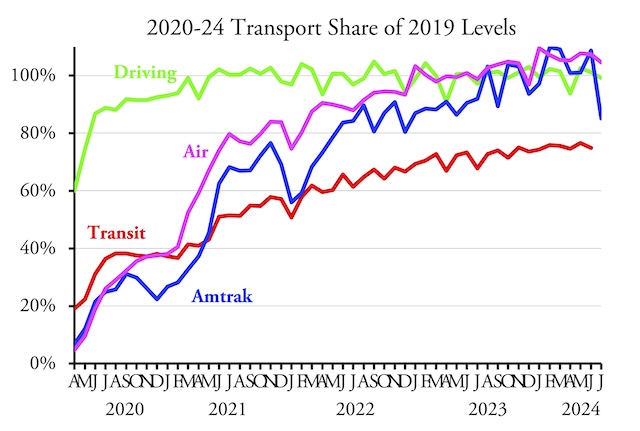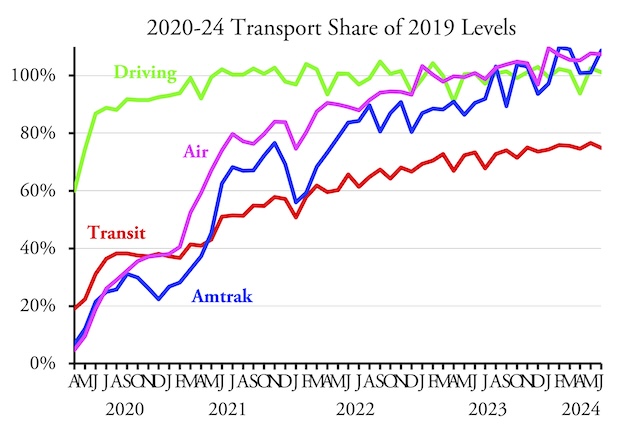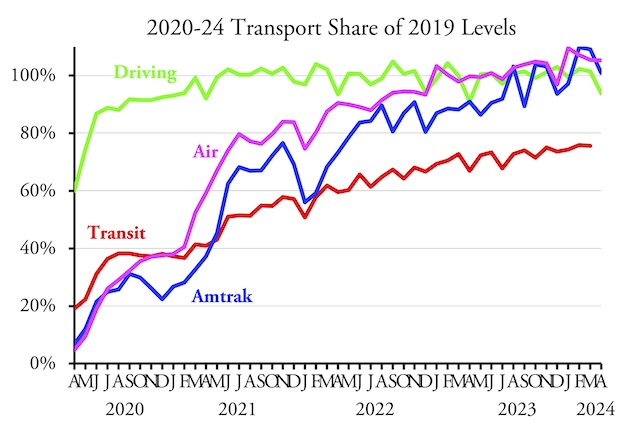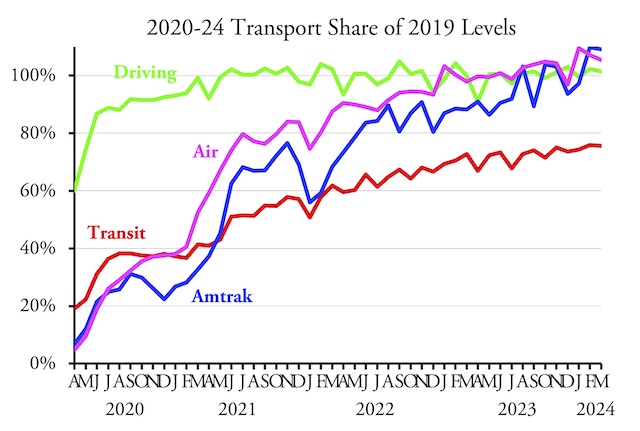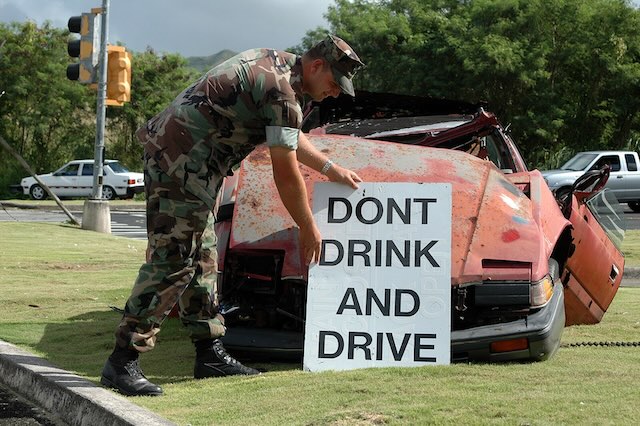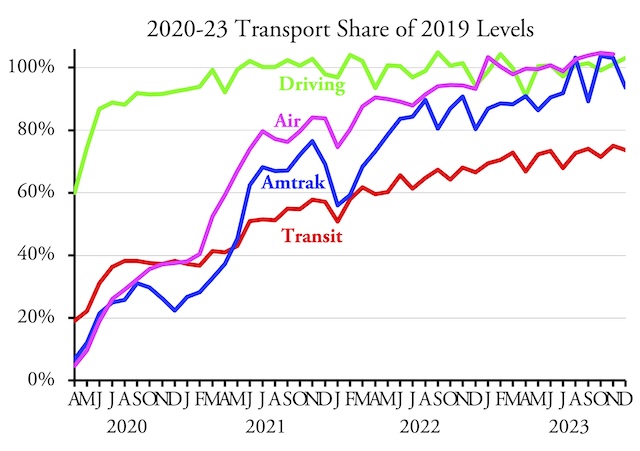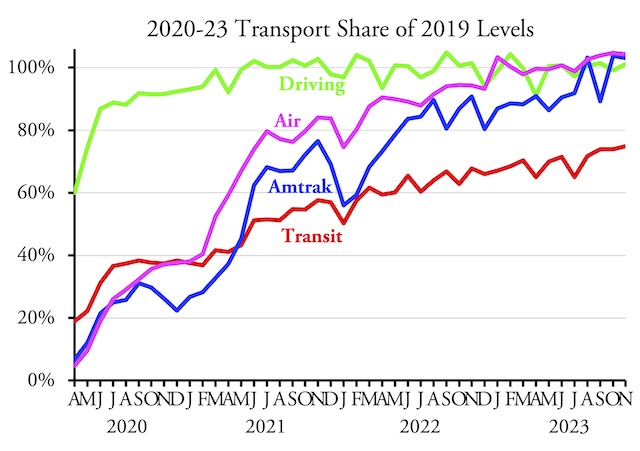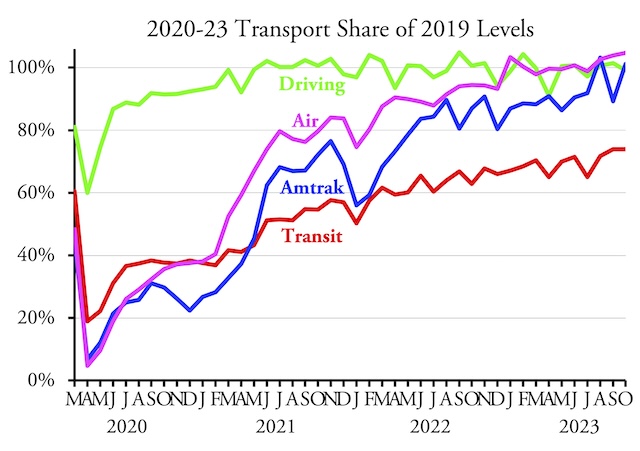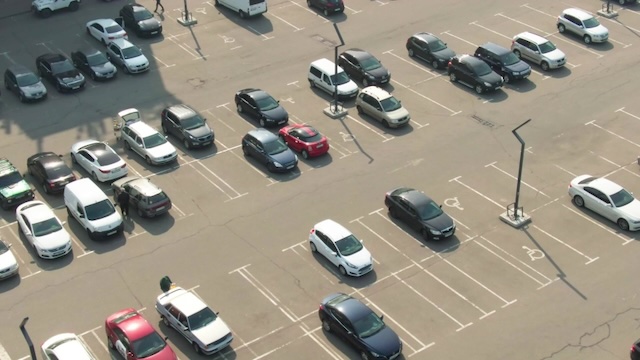Americans drove 99.2 percent as many miles in July 2024 as the same month in 2019, according to data published by the Federal Highway Administration yesterday. This is one of the few times that monthly highway traffic data have been released before transit ridership data.
July transit data are not yet available.
Except in April 2024, when driving dipped below 94 percent of pre-pandemic levels, miles of driving have been 99 percent to 103 percent every month for the last year. As usual, rural driving was more: 3.5 percent above 2019, while urban driving was 2.8 percent less than in 2019. However, driving on urban interstates grew 1.4 percent.

